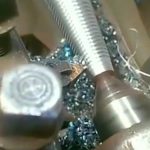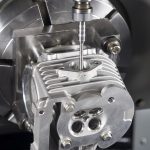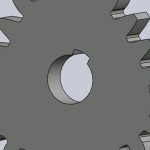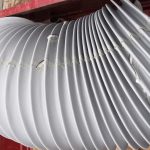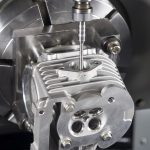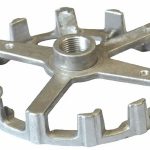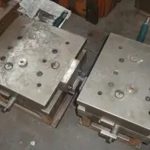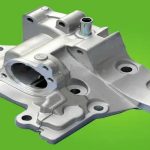As we all know, adding an appropriate amount of rare earth elements to steel materials will have a significant impact on the structure and performance of the material. Usually the rare earth elements in steel are added in 0.05%~0.20%. Because the ratio of the atomic radii of rare earth to iron far exceeds 15%, and the difference in electronegativity between rare earth and iron is very large, these are not conducive to the formation of solid solution, so the solubility of rare earth in steel is very low. Most of the rare earth elements in steel exist in the form of rare earth compounds, mainly rare earth oxides and rare earth sulfides.
Xi’an Aeronautical Vocational and Technical College has carried out research on the effect of adding rare earth elements to cast steel on its structure and performance. They used ZG35CrMnSi cast steel as the test material, and the rare earth additive used was mixed rare earth. Considering that the test material contains a certain amount of sulfur And the loss when adding rare earth elements, the range of rare earth addition is 0.23%~0.38%, this addition refers to the total amount of rare earth added to molten steel during smelting. Compare the structure and performance of the two sets of samples with and without rare earth elements. Steel casting is smelted in an intermediate frequency induction furnace, and the casting is prepared by investment casting. Then the test piece is heated to 900°C+670°C for air cooling, and then heated to 890°C for quenching in oil; then 570~630°C fire.
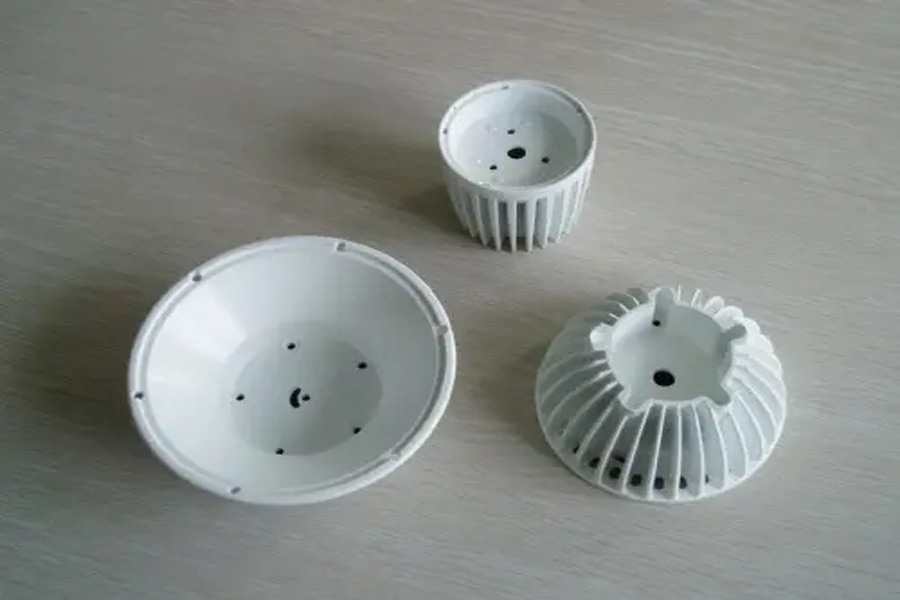
The comparative test results show that rare earth has little effect on the strength of cast steel, but it has a significant effect on the toughness of cast steel. The impact toughness is increased by 43%, and the elongation rate is increased by 13.3%. Microstructure inspection shows that the tempered sorbite of the cast steel structure without rare earth elements is relatively coarse, and its grain size is about 5; among them, the gray lumps are MnS inclusions, which are not distributed on the entire inspected surface. In general, the morphology of MnS is mostly angular. The sample structure of the cast steel with rare earth elements is uniform and fine tempered sorbite, and the grain size is about 8-9. It shows that the structure of cast steel can be refined after adding rare earth elements.
In addition, after adding rare earth elements, the desulfurization effect of steel is not obvious, but it has a greater influence on the morphology of MnS. When the rare earth elements are not added, the MnS in the steel is in the shape of strips or blocks with edges and corners; after adding the rare earth elements, the sulfide is approximately spherical, and the distribution is relatively dispersed relative to the sample without the rare earth elements, but only in a few places You can see strip or block sulfide inclusions. On the fracture of the sample without rare earth elements, MnS is concentrated and dendritic. The fracture of the MnS inclusion area is mainly intergranular fracture, and intergranular secondary cracks can be seen locally.
In the samples with rare earth elements, the fracture is ductile transgranular fracture. Even in the area where sulfides are concentrated, the matrix metal is still ductile transgranular fracture. Cast steel added with rare earth elements eliminates dendritic sulfides and changes them into spherical or non-angular rods and massive rare earth sulfides, which is beneficial to the improvement of toughness.
Studies have pointed out that the principle of rare earth element refinement may be due to the following reasons:
(1) Sulfides and oxide inclusions formed by adding rare earth elements to steel can become non-spontaneous crystal nuclei of steel, which can refine equiaxed crystals and shorten columnar crystal regions.
(2) The solubility of rare earth elements in the solid phase is very small. Once the molten steel is solidified, the rare earths are enriched in the liquid phase at the front of the growing crystals, preventing the crystals from growing, thus making the grains refined.
(3) Rare earth elements tend to accumulate in the grain boundaries, reduce the interfacial tension of the alloy, and reduce the driving force for grain growth, thereby inhibiting the growth of austenite grains. Correspondingly, the flaky martensite formed by quenching is also smaller. .
Please keep the source and address of this article for reprinting: Rare earth can effectively improve the toughness of cast steel
Link to this article:Rare earth can effectively improve the toughness of cast steel
Reprint Statement: If there are no special instructions, all articles on this site are original. Please indicate the source for reprinting:Mold Wiki,Thanks!^^

